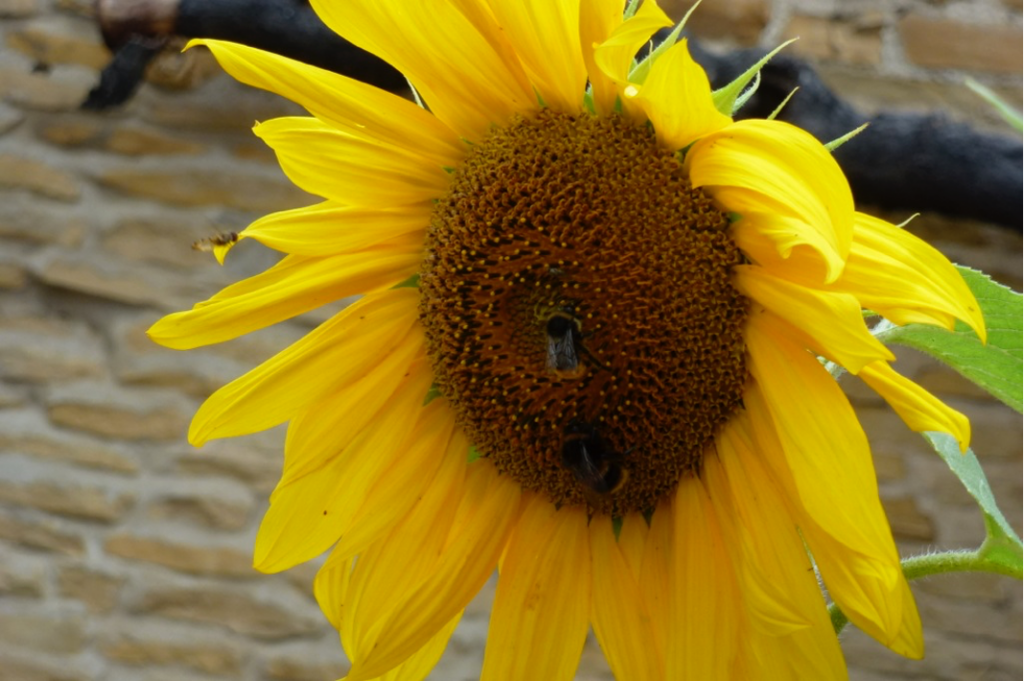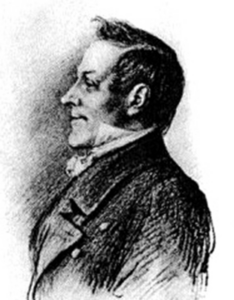Heliopolis I
(Poet's title: Heliopolis I)
Set by Schubert:
D 753
[April 1822]
Im kalten, rauen Norden
Ist Kunde mir geworden
Von einer Stadt, der Sonnenstadt;
Wo weilt das Schiff, wo ist der Pfad,
Die mich zu jenen Hallen tragen?
Von Menschen konnt’ ich nichts erfragen,
Im Zwiespalt waren sie verworren.
Zur Blume, die sich Helios erkoren,
Die ewig in sein Antlitz blickt,
Wandt’ ich mich nun und ward entzückt.
»Wende, so wie ich, zur Sonne
Deine Augen, dort ist Wonne,
Dort ist Leben;
Treu ergeben
Pilgre zu und zweifle nicht,
Ruhe findest du im Licht.
Licht erzeuget alle Gluten,
Hoffnungspflanzen, Tatenfluten!«
In the cold, harsh north
News has reached me
About a city, the city of the sun.
Where is the ship now, where is the path,
Which is going to take me to those halls?
I was not able to ask any humans about this, –
They were in a state of confusion in their disputes.
Towards the flower that Helios chose for himself,
The one which eternally looks him in the face,
I have now turned myself towards that flower, – and I have been entranced:
“Turn, just like me, towards the sun
Turn your eyes! That is where happiness is,
That is where life is;
Truly devoted,
Set out as a pilgrim and do not hesitate;
You will find peace in the light;
Light engenders all fires,
Plants of hope, floods of deeds!”
All translations into English that appear on this website, unless otherwise stated, are by Malcolm Wren. You are free to use them on condition that you acknowledge Malcolm Wren as the translator and schubertsong.uk as the source. Unless otherwise stated, the comments and essays that appear after the texts and translations are by Malcolm Wren and are © Copyright.
☙
Themes and images in this text:
The ancient world Boats Eternity Eyes Faces Floods and tides Flowers Hope Light North and south Paths Pilgrims and pilgrimage Ships The sun Towns
The poet is in the dark north and feels the lack of the sun. There are only rumours of the existence of a city in the sun, but nothing in human experience, with all its conflicts, seems to take us there. We therefore have to take the lesson of the sunflower and keep looking towards the light, which will bring us to life and peace.
All of this is a fairly conventional summary of the Platonic or Idealist tradition in western thought, which stresses the difficulties of attaining wisdom or spiritual release within the constraints of the human condition. Through self-control, asceticism and hard work we might achieve a sort of enlightenment. Yet the end of Mayrhofer’s poem offers two vivid images which lead us to think that the message, and therefore the text as a whole, might be more interesting than this.
Licht erzeuget alle Gluten,
Hoffnungsplanzen, Tatenfluten!
We might read ‘Licht erzeuget alle Gluten’ in terms of biology (light begets everything with a spark of life), chemistry (light produces all the fires) or physics (light causes all heat). Mayrhofer lived at a time in the history of science when these distinctions were only just beginning to be made, so the ambiguity is connected with the lack of clarity about the nature of heat, burning and life[1].
There is more ambiguity in the compound noun ‘Hoffnungsplanzen’. Are these plants which produce hope or which grow as a result of hope? ‘Tatenfluten’ are floods of deeds or torrents of activity. The juxtaposition of the two compounds brings together the rooted and immovable and the fluid and dynamic. The final word of the text, Tatenfluten, therefore seems to be challenged by its context. Where have these floods come from? Yes, they flow from light (or Light), but the sheer difficulty of making sense of this imagery (particularly in connection with the Hope Plants) should perhaps make us reflect a little more on this metaphor.
Tatenfluten, floods of activity, are the end point of the journey that the poet set out on from the cold, harsh north. He could not find any means of getting to the destination (Heliopolis / Sun City) within society but now he is there. The big lights of Sun City produce heat (burning? ardour?), hope and activity. The cold frozen north must therefore be the land of depression. In that wasteland there is no motivation. There does not even seem to be any drive leading to motivation.

Sunflowers are rooted to the spot in the same way that depressed people are, yet they can at least keep their heads turned to the light. If we do the same, some process which no scientist yet understands will deal with the symptoms of depression: ardour will take the place of a cold heart, hope will take over from despair and above all motivation will flood in.
[1] Mayrhofer’s ‘Beim Winde’ also deals with the importance of ‘die heilige Glute’.
☙
Original Spelling Heliopolis I Im kalten, rauhen Norden Ist Kunde mir geworden Von einer Stadt, der Sonnenstadt. Wo weilt das Schiff, wo ist der Pfad, Die mich zu jenen Hallen tragen? Von Menschen konnt' ich nichts erfragen, - Im Zwiespalt waren sie verworren. Zur Blume, die sich Helios erkoren, Die ewig in sein Antlitz blickt, Wandt' ich mich nun, - und ward entzückt: »Wende, so wie ich, zur Sonne Deine Augen! Dort ist Wonne, Dort ist Leben; Treu ergeben, Pilg're zu, und zweifle nicht; Ruhe findest du im Licht; Licht erzeuget alle Gluthen, Hoffnungspflanzen, Thatenfluthen!«
Confirmed by Peter Rastl with Gedichte von Johann Mayrhofer. Neue Sammlung. Aus dessen Nachlasse mit Biographie und Vorwort herausgegeben von Ernst Freih. v. Feuchtersleben. Wien, 1843. Verlag von Ignaz Klang, Buchhändler, pages 195-196.
Note: Schubert received Mayrhofer’s texts in handwriting; the manuscripts of his cycle Heliopolis, dedicated to Franz von Schober, are preserved in the Vienna City Library. The printed edition of Mayrhofer’s poems appeared much later and presents the texts in a revised version. This poem (originally no. 5 of the cycle) is now no. 1 of the cycle in the printed edition. Here the cycle is preceded by a motto:
Ein altes Thema, vorgetragen In grauen Zeiten, laß uns variiren! Wir dürfen, wenn wir auch Ikarisiren - Uns öfters noch zur Sonne wagen! 1821. An old theme, presented In grey times, allows us to vary! Even if we have to act like Icarus, we should Venture more frequently towards the sun! 1821.
To see an early edition of the text, go to page 195 [215 von 320] here: http://digital.onb.ac.at/OnbViewer/viewer.faces?doc=ABO_%2BZ17745080X


